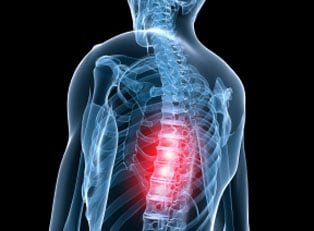Back Pain: Is It a Pinched Nerve?
Back pain can seriously interfere with everyday life by inhibiting movement. If you aren’t a veteran of spinal issues, you may assume you’ve just a pinched a nerve and that things will return to normal in a few days. While that’s possible, it’s important to be careful and be sure it’s a pinched nerve rather than something more serious. Here’s a look at how to tell if you’re dealing with a pinched nerve in your back.
What is a Pinched Nerve?
A pinched nerve in the back occurs when something happens anatomically to put pressure on the nerve root or the nerve’s protective covering, the myelin sheath. Bones or other tissues are generally responsible for this pressure or inflammation. With appropriate treatment and plenty of rest, the issue generally resolves itself in a few days or weeks.
On the other hand, if you insist on pushing through the pain and forcing your body to move in ways that stress the damaged nerve, the issue can get worse. Furthermore, if a pinched nerve remains pinched for too long, you may experience permanent nerve damage. Pinched nerves occur most commonly in the neck (cervical radiculopathy), back, and wrists (carpal tunnel). Sciatica, a pinched sciatic nerve, may cause some pain in the lower back, and generally results in a tingly, numb, and painful leg or foot.
Causes of a Pinched Nerve in the Back
Pinched nerves occur more commonly as you age, because the integrity of the spinal column declines over time. Herniated discs are a common cause of pinched back nerves; the cushion between discs begins to protrude from its harder exterior and irritates the root of the nerve. Degenerative disc or joint disease can also pinch a nerve. Repetitive movement, poor posture, and trauma (like a car accident) may also be culprits.
Sciatica in particular tends to be caused by excessive sedentariness, whether from sitting in front of the TV too much or because of an occupational requirement, like driving for long periods of time. Rarely, tumors can grow and put pressure on the spinal nerves. Obesity also increases the load on the spine, making it more likely for spinal issues that cause a pinched nerve to occur.
Symptoms of a Pinched Nerve
Pinched nerves generally maintain similar symptoms. In the middle of the back, you may notice pain that varies from dull and uncomfortable to intense and sharp. The pain may radiate out from the area, even so far as up towards the neck or down into the lower back as muscles are pulled or weakened and mobility is strained. There may be a sensation of tingling and reduced sensation in the area.
Sciatica generally causes these issues in the lower back. Pain is generally centered in the lower back, spreads down the bottom, and down the back of the thigh and shin (usually only in one leg). The leg may be numb and tingly.
When it isn’t a Pinched Nerve
Trauma in the back can ultimately leave you paralyzed in a worst-case scenario. Thoracic radiculopathy, however, is much less common than lumbar (sciatica) or cervical radiculopathy. This is because the thoracic region’s job is to be a place of stability for the more mobile upper and lower back, so it doesn’t suffer through as much stress as other areas.
While the upper back and neck or lower back tend be more frequently problematic than the thoracic region, there are some serious issues that can arise. When it comes to back pain or discomfort, it’s better to play it safe and seek medical input if rest and at home remedies have little effect.




